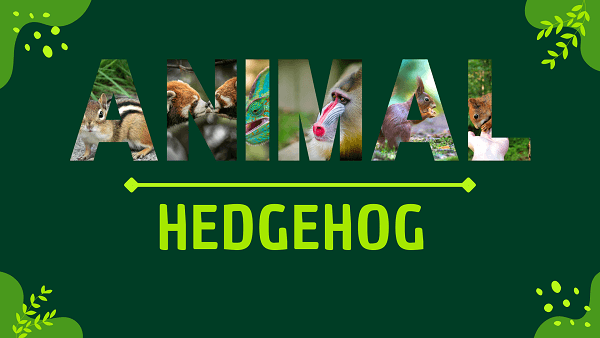Hedgehog | Facts, Diet, Habitat & Pictures
Home » Animals » Hedgehog | Facts, Diet, Habitat & Pictures
Hedgehog Overview
Appearance
The hedgehog is a small, spiny mammal with a round body and a distinctive coat of sharp spines or quills. Its face features a pointed snout and small, keen eyes. Hedgehogs have short legs, each ending in five clawed toes, and they are known for their distinctive habit of curling into a tight ball for protection.
Origins And Evolution
Hedgehogs have evolutionary origins dating back millions of years, with fossil records indicating their presence during the Miocene epoch. Belonging to the family Erinaceidae, they are part of a diverse group of insectivorous mammals.
Over time, hedgehogs have adapted to various habitats across Europe, Asia, and Africa, developing unique characteristics like their spines for defense. Their evolutionary path includes adaptations to nocturnal lifestyles, hibernation patterns, and specialized diets that contribute to their survival.
Behavior and Lifestyle
Hedgehogs exhibit nocturnal behavior, emerging at night to forage for their insectivorous diet, which includes insects, worms, and other small invertebrates. They are primarily solitary creatures, spending much of their time alone, but may encounter other hedgehogs during mating season.
When threatened, hedgehogs have a unique defense mechanism of curling into a spiky ball to deter predators. They are skilled burrowers, creating nests for shelter and hibernation. Hedgehogs’ behavior highlights their adaptability to various environments and their importance as natural pest controllers.
Hedgehog Scientific Classification
- Kingdom: Animalia
- Phylum: Chordata
- Class: Mammalia
- Order: Eulipotyphla
- Family: Erinaceidae
- Subfamily: Erinaceinae
- Genus: Erinaceus
Hedgehog Locations
- Europe
- Asia
- Africa
- New Zealand (introduced)
- Madagascar (introduced)
- Australia (introduced)
- Various islands and regions within their natural range.
Fast Facts
- Name: Hedgehog
- Scientific Name: Erinaceinae spp.
- Habitat: Gardens, forests
- Diet: Insects, plants
- Physical Features: Spiky quills
- Nocturnal: Mostly nocturnal
- Solitary: Often solitary
- Unique Order: Eulipotyphla
- Lifespan: 3-7 years
- Conservation Status: Not assessed
- Fun Facts: Curl into a ball
Physical Characteristics
- Color: Brown, gray
- Skin Type: Spiky quills
- Top Speed: Slow movers
- Lifespan: 3-7 years
- Weight: Light creatures
- Length: Small size
- Age of Sexual Maturity: 2-4 months
- Age of Weaning: 4-6 weeks
Hedgehog FAQs
What is a hedgehog?
A hedgehog is a small, spiny mammal known for its distinctive appearance and nocturnal behavior.
Where do hedgehogs live?
Hedgehogs are found in a variety of habitats, including gardens, woodlands, grasslands, and hedgerows across Europe, Asia, and Africa.
Why do hedgehogs have spines?
Hedgehogs have spines as a protective adaptation to deter predators. When threatened, they curl into a ball, exposing their spines as a defense mechanism.
What do hedgehogs eat?
Hedgehogs are insectivores, primarily feeding on insects, worms, and other small invertebrates.
Are hedgehogs good pets?
Hedgehogs can be kept as pets, but they have specific care requirements and may not be suitable for everyone. They may also be illegal to own as pets in some regions.


